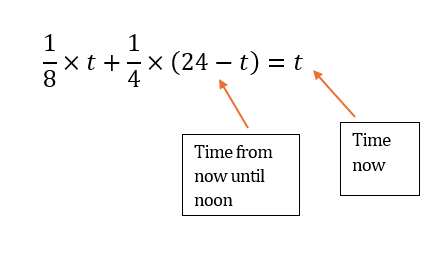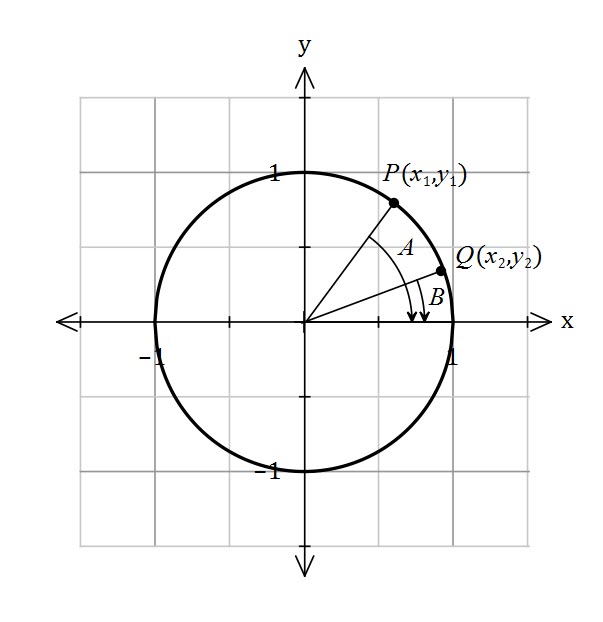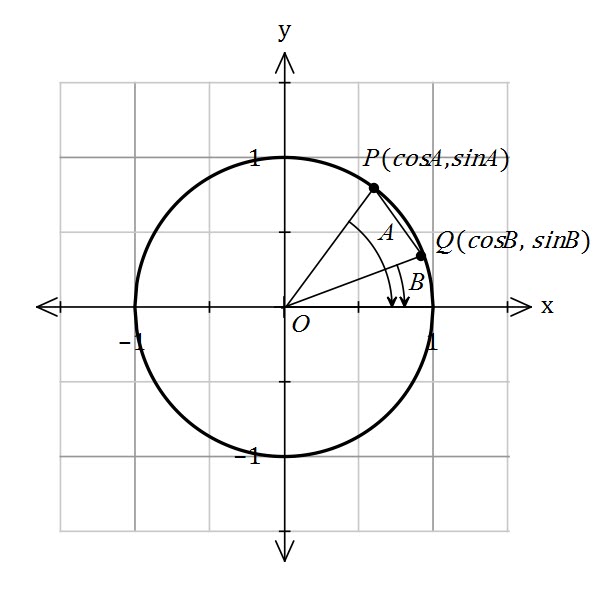This question is from Challenging Problems in Algebra

It’s the type of question students hate – “Who talks like that?”
Let ![]() be the number of hours from noon.
be the number of hours from noon.

![]()
![]()
![]()
Hence the time is 5:20pm
This question is from Challenging Problems in Algebra

It’s the type of question students hate – “Who talks like that?”
Let ![]() be the number of hours from noon.
be the number of hours from noon.

![]()
![]()
![]()
Hence the time is 5:20pm
Filed under Algebra, Puzzles, Simplifying fractions, Solving Equations
Tagged as algebra, solving linear equations, time

I started by trisecting another side of the triangle

This makes it clearer that the two lines are parallel

Which means the two angles labelled above are corresponding and therefore congruent.
Let the side length be ![]() .
.
The area of the equilateral triangle is
(1) ![]()

![]()
![]()
Area of right triangle
(2) ![]()
The fraction of the area is

Filed under Algebra, Area, Area of Triangles (Sine), Finding an area, Geometry, Puzzles, Right Trigonometry, Simplifying fractions, Trigonometry
Tagged as geometry problem, geometry snacks
My Year 11 Specialist Mathematics students are working on Trig identities. We came across this question
Without the use of a calculator, evaluate
(a)(b)
OT Lee Year 11 Specialist Mathematics textbook
I spent a bit of time thinking about the question. Can you use a product to sum identity twice? But I was always being left with an angle that doesn’t have a nice exact value.
I tried a few things, had a chat to Meta AI, and finally stumbled upon this method.
Remember
![]()
Which can be rearranged to
![]()
(a) ![]()
Which simplifies to
![]()
Now ![]()
Hence ![]()
And we will do the same for part (b)
![]()
Which simplifies to
![]()
Now ![]()
Hence ![]()
And then I had to test them on my Classpad.

Filed under Classpad Skills, Identities, Simplifying fractions, Trigonometry, Year 11 Specialist Mathematics
Tagged as exact values, trig identities
Deriving the addition and subtraction trigonometric identities.
We will start with cosine, and use the result to derive the remaining identities.
Proving ![]() .
.
![]() and
and ![]() are represented in the unit circle below.
are represented in the unit circle below.

Remember ![]() and
and ![]()

Using the cosine rule and triangle ![]() , find
, find ![]()
![]()
![]()
Using the distance between points, find ![]()
![]()
![]()
![]()
Remember the Pythagorean identity
![]()
![]()
Hence
![]()
(1) ![]()
We can then use this identity to find ![]() .
.
![]()
![]()
Remember ![]() and
and ![]()
![]()
(2) ![]()
We can also find ![]()
Remember, ![]()
![]()
![]()
![]()
(3) ![]()
We can use equation ![]() to find
to find ![]()
![]()
![]()
![]()
(4) ![]()
And we can use both the sine and cosine identities to find ![]()
Remember ![]()
![]()
![]()
![]()
![]()
![]()
(5) ![]()
and
(6) ![]()
I use synthetic division to factorise polynomials with a degree greater than 2. For example, ![]()
It works best with monic polynomials but can be adapted to non-monic ones (see example below).
The only problem is that you need to find a root to start.
Try the factors of ![]() i.e.
i.e. ![]()
![]()
Hence, ![]() is a root and
is a root and ![]() is a factor of the polynomial.
is a factor of the polynomial.
Set up as follows

Bring the first number down

Multiply by the root and place under the second co-efficient

Add down

Repeat the process




The numbers at the bottom ![]() are the coefficients of the polynomial factor.
are the coefficients of the polynomial factor.
We now know ![]() .
.
We can factorise the quadratic in the usual way.
![]()
Hence ![]() .
.
Let’s try a non-monic example
Factorise ![]()
I know ![]() is a root. Otherwise I would try the factors of 30.
is a root. Otherwise I would try the factors of 30.
Use synthetic division

Because this was non-monic we need to divide our new co-efficients ![]() by 6 (the co-efficient of the
by 6 (the co-efficient of the ![]() term)
term)
![]()
We now need to go again. I know that ![]() is a root and
is a root and ![]() is a factor.
is a factor.

Our quadratic factor is ![]() , which is
, which is ![]() .
.
The quadratic factor doesn’t have integer factors so,
![]()
I think this is much quicker than polynomial long division.
Filed under Algebra, Factorising, Factorising, Fractions, Polynomials, Quadratic, Simplifying fractions, Solving Equations
Tagged as non monic synthetic division, Synthetic division
Another puzzle from this book

Two ladders are propped up vertically in a narrow passageway between two vertical buildings. The ends of the ladders are 8 metres and 4 metres above the pavement.
Find the height above the ground,,
![]() and
and ![]() (Angle Angle Similarity)
(Angle Angle Similarity)

Hence,
(1) ![]()
(2) ![]()
From equation ![]()
![]() and from
and from ![]()
![]()
Hence, ![]()
Therefore, ![]() and
and ![]()
From equation ![]()
![]()
Hence ![]() is
is ![]() m above the ground.
m above the ground.
Filed under Geometry, Puzzles, Similarity, Simplifying fractions, Solving Equations
Tagged as Puzzle
In my town 10% of the dogs think they are cats and 10% of the cats think they are dogs. All the other cats and dogs are perfectly normal. When all the cats and dogs in my town were rounded up and subjected to a rigorous test, 20% of them thought they were cats. What percentage of them really were cats?
Hamilton Olympiad 2003 B4 – The Ultimate Mathematical Challenge
| Let Then But we also know 20% of the total think they are cats. Therefore, Percentage of cats is Substitute |
Filed under Algebra, Arithmetic, Percentages, Simplifying fractions, UK Mathematics Challenge
Tagged as Fractions, percent, uk maths challenge
